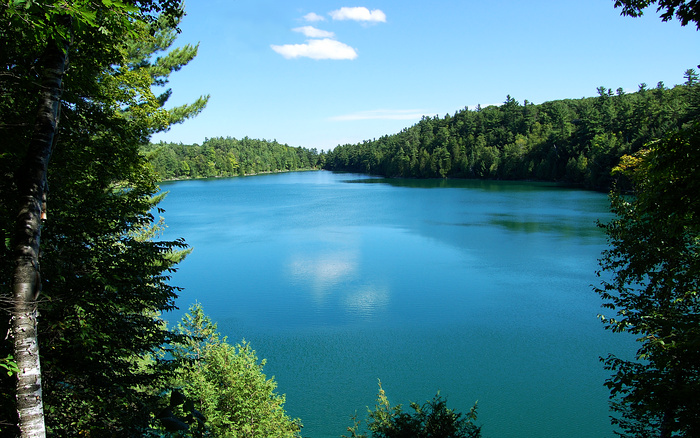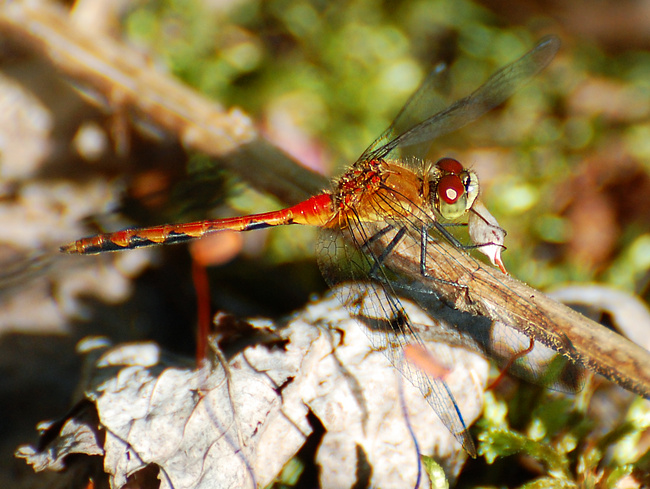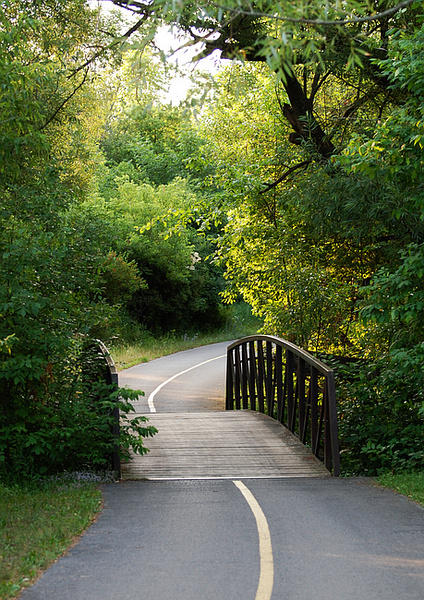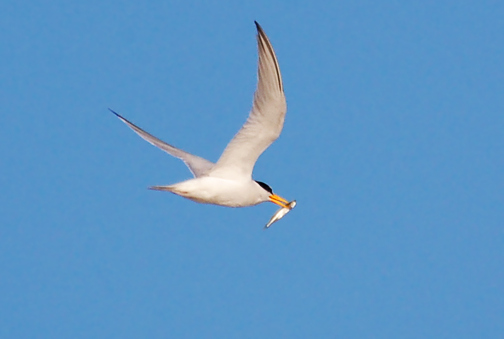
Pileated Woodpecker and fall colors
October 11th, 2012
It's been awhile since I've posted one of these. The fall colors at Jack Pine Trail made for a lovely backdrop.

1680x1050 wallpaper
Pink Lake
August 22nd, 2012
Took my mom hiking at Pink Lake in the Gatineau, and took the landscape lens along for a change.

1680x1050 wallpaper
Under the right conditions, Pink Lake is a deep, turquoise green, like something you'd expect to see in the tropics. It can be hard to capture the color on camera (my camera anyway), but it did come out in this one:

Trivia courtesy of www.canadascapital.gc.ca:
"With no oxygen at the bottom of Pink Lake, there is only one organism that lives in its depths--an anaerobic prehistoric organism. It is a pink photosynthetic bacterium that uses sulphur instead of oxygen when it transforms sunlight into energy.
Pink Lake is also home to the three-spined stickleback fish, a saltwater fish left behind by the Champlain Sea that used to cover the region. This little saltwater fish adapted to the lake's gradual desalination and today lives in the lake's fresh water."
Contentment
July 30th, 2012

1680x1050 wallpaper
White-Faced Meadowhawk
July 24th, 2012
Meadowhawks are the small, cherry-red dragonflies that appear in abundance in late summer. This is one of the most common ones.

The second picture is an interesting action shot. The meadowhawk appeared to be eating some sort of pupa, a tiny cocoon no larger than its own head!

Amber on violet
July 16th, 2012
European Skippers, an introduced species. These pretty skippers can be very abundant during their flight time. The flowers they're nectaring on, cow vetch, are also a European import.

A youngster in the meadow
July 14th, 2012
Found this darling off Watts Creek Trail last week.

1680x1050 wallpaper

A shot with mom:

Watts Creek Trail
July 11th, 2012


Summer 2012 Hatteras Triplist
July 9th, 2012
( Herein )
One good tern deserves another
July 7th, 2012
(Yeah I know, I've used the joke before.)
I always enjoy tern-watching on the coast. More to the point tern-photographing, as I find it almost impossible to identify tern species in flight unless I can "freeze frame" them with a photograph, and study fine details at leisure. This is a Royal Tern, the common large tern of the Outer Banks:

And here is something a little more interesting--though I didn't realize it until I looked at the photo back home.

A Caspian Tern. Note the subtle yellow and black tip to its coral-red beak, and the heavy black patches under the wingtips. The black forehead is also a giveaway. Royal Terns have black foreheads too in breeding plumage, but they start molting in late May, so by mid-June they all have, as it were, receding hairlines.
Of course, here in Ottawa, Royal Tern would be the exciting one! It's an exclusively coastal bird, whereas Caspian Terns are occasionally seen along the Ottawa River in migration.

A Least Tern carries a fish back to its young. These terns are as small as songbirds, delicate and swallowlike as they flit over the ocean surf. While most of their relatives prefer the safety of salt marshes or deserted islands for raising young, Least Terns nest right on the beaches of Cape Hatteras. Like other beach-nesters, they are very vulnerable to human disturbance, so at Outer Banks their preferred (pristine, undeveloped) beaches are cordoned off during the breeding season.
This is a Good Thing. But I still envy the person who got close enough to a colony to take this, perhaps the most adorable nature photo I've ever seen.
More Hatteras highlights
July 2nd, 2012
White Ibises are "gimmes" for a birder at Pea Island Wildlife Refuge--you're just about guaranteed to see them. I have yet to find their gorgeous iridescent relative the Glossy Ibis, though it occurs in the Outer Banks also. Maybe someday!

1680x1050 wallpaper

I've seen these pretty red and yellow flowers at Outer Banks since I was a little girl. Until recently, I just assumed they were native. They're called "Indian blankets" or "firewheels", formally "gaillardia aristata", and actually they're only native in western North America. (I photographed some in the Okanagan, different color scheme but same species, I think.) They were introduced by Joseph Nash Bell, as recounted here, in the early 1900's. They thrive in sandy soil and are even salt-tolerant, so they've taken to their new home as if they'd been there all along! The locals call them "joe bell flowers."
( Click for more (Marbled Godwits, Sanderlings, Fish Crow and others) )
|
